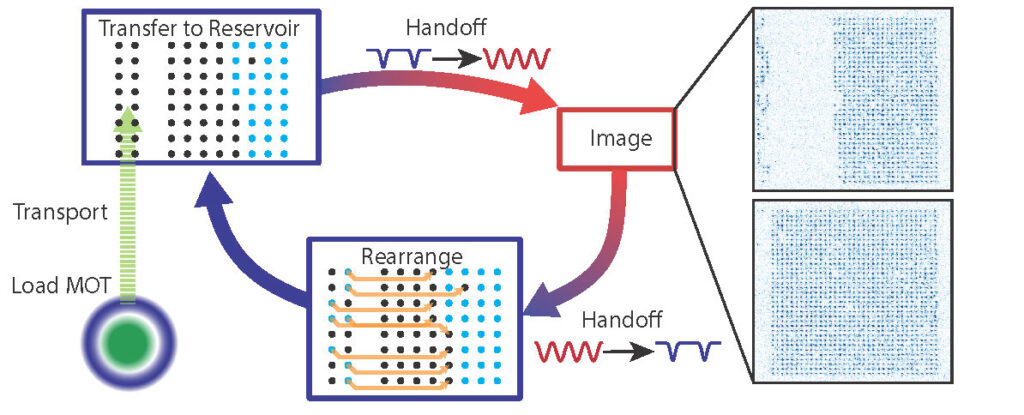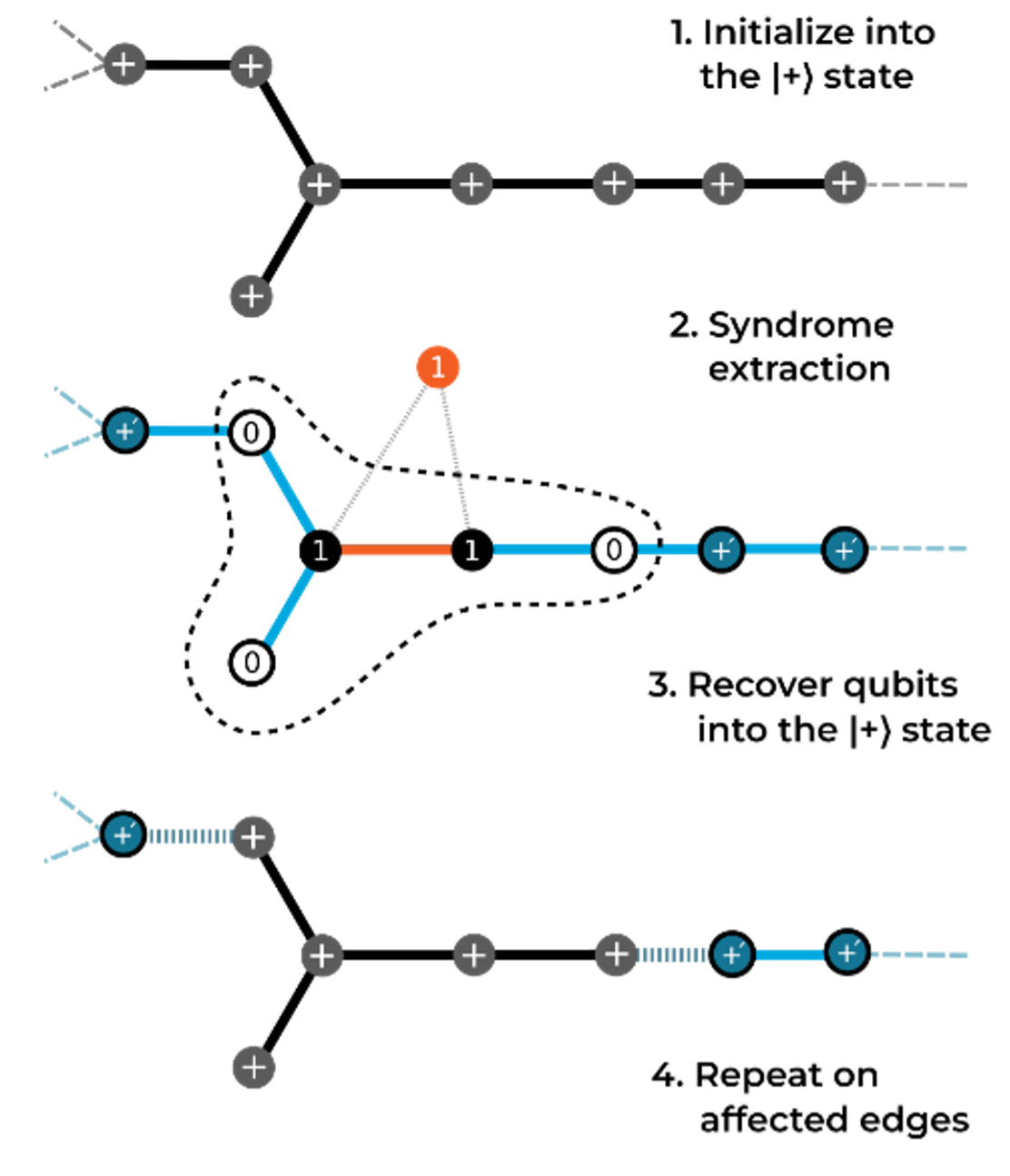Kortny Rolston-Duce, Director of Marketing Communications
In February, quantum researchers, developers and enthusiasts gathered online to listen to speakers, complete coding challenges, and compete in hackathons as part of QHack 2023.
More than 2,800 people from 105 countries participated in this year’s event, which was organized by Xanadu and was part expo, hackathon, and scientific conference. Since its inception in 2019, the multi-day QHack has become one of the largest online gatherings for the quantum computing community.
As part of its ongoing support for the growing quantum ecosystem, Atom Computing sponsored the visualization hackathon for QHack 2023. A team from Qualition won the challenge after presenting a prototype for quantum image processing framework.
We met with Qualition CEO Alish Shamskhoozani, Chief Technology Officer Amirali Malekani Nezhad, and other members of the team to learn more about their organization, their winning project, and why they believe image processing is a killer application for quantum computing.
First off, tell us about Qualition. Can you please describe what Qualition is and does?
Qualition was launched in 2022 by a group of researchers and developers located around the world with the common goal of advancing the nascent quantum computing industry and turning hype around this technology into reality. Qualition, which is derived from “Quantum Coalition,” has expertise in a wide variety of quantum computing applications.
We take great pride in being mentored by Womanium, an organization dedicated to promoting diversity and inclusion in the field of quantum technology. Moreover, we are honored to have technical ambassadors from some of the top quantum technology companies in the industry, including Quantinuum, qBraid, QWORLD, and CQTech. These partnerships provide us with the expertise and guidance of some of the most respected names in the field and enable us to collaborate on projects that have the potential to make a significant impact.
Whether through our research initiatives, our participation in quantum hackathons, or our partnerships with industry leaders, Qualition is committed to making a meaningful contribution to the advancement of quantum technology.
What project did your team complete for the QHack 2023 challenge?
Qualition presented a prototype for quantum image processing framework based on efficient quantum information encoding algorithms (A Distributed Amplitude Encoder, and A linearly scalable, FRQI inspired by the paper “Quantum pixel representations and compression for N-dimensional images'' by Mercy G. Amankwah, Dr. Daan Camps, Professor. E. Wes Bethel, Dr. Roel Van Beeumen & Dr. Talita Perciano) capable of tackling high dimensional data. We demonstrated the features and performance of the framework through two branches of applications, namely Recognition, and Alteration use cases.
Recognition encompasses all classes of classification tasks, whereas Alteration encompasses all classes of filters, and provides a practical, fully-quantum framework for enhancing or processing images using techniques with similarities to traditional image processing. The two methods taken together can accommodate all traditional image processing algorithms in a fully quantum mechanical framework.
We presented a comprehensive analysis of a variety of pipeline options and assessed overall performance as a function of the scale of the model, the fidelity of the encoder, and the accuracy of the trained model. This work serves as the foundation for Qualition’s Quantum Image Processing framework.
What were the team’s findings? Was there an advantage to using quantum computing?
Image processing was founded on the mathematics of linear algebra, where images are mathematically represented as vectors (similarly to quantum states), and operations applied to the images, also known as filters, are mathematically represented as matrices (similar to quantum operators).
Given the mathematical parallels between image processing and quantum mechanics, we consider image processing as a quantum evolution, and thus anticipate a significant advantage when performing the image processing tasks using quantum hardware. Quantum parallelism and presence of quantum Interference allow us to achieve a speedup when performing these tasks through a modeling of states and unitary operations. Assuming the near-term existence of more fault-tolerant and quantum hardware with higher quantum volumes, we can expect to tackle large classification tasks much faster than the equivalent classical paradigms.
The Recognition model is perhaps the most advantageous application of a quantum-enabled image processing model courtesy of the low dimensionality of the output, which is usually a label, and therefore easily extracted with a low number of shots. In contrast to the Recognition model, there exists an inherent challenge for the Alteration model. It requires the user to read out a large state vector, which in turn requires a considerably high number of shots for an adequately accurate demonstration. As quantum computing hardware improves, however, so will the potential advantage of employing quantum filters characteristic of Alteration use cases to carry out quantum image processing. Furthermore, our current research paves the way for development of feasible generative quantum AI models, something which we are striving for in the year to come!
In conclusion, we are proud to demonstrate initial evidencethat quantum image processing is a promising avenue for performing classification for large models The current body of work at Qualition can be further extended to a variety of modalities and generalized to be the first of its kind, “High Dimensional QML”, feasible on current hardware. These pursuits will be integral to demonstrating quantum hardware’s advantage for real-life industrial use cases over a vast array of fields, and certain aspects of the framework can be extended to other fields of quantum computing e.g., large-scale QAOA, more complex quantum drug simulation, and even faster quantum key distribution.
Why is image processing a strong application for quantum computing?
Image processing is an inherently resource-intensive task due to its high dimensional nature. Classical paradigms have been performing quite well, as can be seen in a variety of papers and products for classification, alteration, and generations aspects of AI and machine learning. However, the computational cost of the models and the time taken to train them grows as we scale these models and may impact the environment due to the increased demands on classical computing hardware.
Given the mathematical similarities between image processing and quantum mechanics, we can demonstrate a significant advantage when performing the classification tasks using quantum hardware. Assuming we can feasibly implement the models on current hardware, we can expect significant speedups in training and inference time as compared to the equivalent classical models.
That said, image processing is perhaps the perfect use case for demonstrating the quantum advantage in industrial use-cases for the NISQ era hardware, for both scientific as well as artistic endeavors.
Why did Qualition select the visualization challenge?
Our Quantum Image Processing framework provides a user-friendly illustration for understanding the effect of quantum evolution operators on a given state, similar to that of a Bloch Circle, but generalized to N-dimensional states.
Given the mathematical correspondence, we can infer that real-valued quantum states can be represented as images, and thus we can visually observe the effect of applying any real-valued quantum operation to the state through the change in the state’s image representation.
This visualization can be expanded to a procedural generation illustrating the gradual change in the quantum state by gradually applying the operation, i.e., applying an RY as we gradually increase the rotation angle.
What are some areas/industries in which quantum-enabled image processing could be used?
Quantum image processing can be applied to virtually any image processing task present in the industry, and some examples which would considerably benefit from such a quantum-enabled model would be medical Imaging (e.g., cancer detection, disease classification, segmentation for neurological diseases), satellite Imaging (e.g., object detection, land cover and land use detection, and change detection), and real-time unmanned vehicle routing (e.g., autonomous vehicles, unmanned drones, and robotics).
Quantum-enabled image processing obviates the need to remove certain features for a faster inferenc, a necessary step in classical Deep Learning models. Therefore, using quantum techniques, we can capture and retain more information. In the case of medical imaging, the ability to retain key information content may be the difference between finding a small tumor or not.
We look forward to seeing what the Qualition team does next!


